By Brittany Pringle, UW Biology undergraduate
Although there are many problems the marine ecosystem faces, there is one that is especially important and personal to me. Chinook salmon are decreasing in mean size, weight, and abundance. Here is my and my family’s story:
“The good ol’ days”
My father, Steven Pringle, is a lifelong fisherman. Ever since the year 1967 when he was four years old, fishing has been his passion. Starting off in the Green River, in Kent, WA, he would go with my grandfather fishing for steelhead. The art of fishing has been passed down generations in my family. Hence, my grandfather taught my dad everything he knows about fishing. They would go out and catch their limit on steelhead every weekend. Back then, they were plentiful. Today, he says “You’re lucky to get one or two steelhead a whole season of fishing on the Green River.” Not only has he observed steelhead decline, but he’s also seen the population and size of Chinook salmon dwindle over the last 50 years.
My father has fished the Puget Sound, specifically Commencement Bay, for over 50 years. The largest salmon he ever recalled catching was 40 pounds off the mouth of the Puyallup River in 1994. When he first started fishing there, it would be normal to catch your limit with around 20-25 lb Chinook salmon.
The Puget Sound had really good fishing back then.
– Steven Pringle
Over the years, my dad has realized that he and other fishermen in our community have not been catching as many Chinook. And the Chinook they catch are decreasing in size and especially weight. When asked to compare the last few fishing seasons in the Puget Sound to what they were like when he first started, he said, “Now, each season of fish are all in the 10-12 pound range. I don’t think I’ve seen a 25 lb Chinook put in the back of the boat for at least the last 3 seasons”. Not only has my father and other fishermen in the Puget Sound observed this, I have experienced it first hand as well…
I have observed this my entire childhood
It’s true, I have also observed this in my personal fishing experience. My father would take me and my siblings out fishing on Puget Sound to catch Chinook salmon. My childhood basically consisted of spending the entire summer out in the bay screaming, “FISH ON!!” After catching these salmon, my siblings and I would proudly run home to our mother and pose with our trophy fish.
Our dad, Steve, would show us how he would gut and filet the salmon. I remember excitedly waiting to see if the salmon had eggs to determine whether it was male or female. Maybe this is where my love of biology stemmed from? I thank my dad for that.
I remember when I was around 6 years old, my dad hooked a 27 pound Chinook. I was so excited to see it, but when it came flopping into the boat I was so scared because it was almost as large as I was. Flash forward 15 years and me nor my dad have caught a fish as large as that one.
One fish, two fish, someday NO FISH
During the interview with my dad Steve, I asked him what he thought was causing this decrease in size and population numbers in Chinook salmon. He responded:
The main problem with the fish returns is because of the rivers where they go back to spawn. There just isn’t as much food, their habitat is degraded, and the spawning grounds are nothing like they used to be. This is most likely due to logging, pollution and everything else that man has messed up.
-Steven Pringle
Looking back, the Bevan Series has provided me so much more knowledge on the issues of fisheries management, conservation, and sustainability. I can take some of this knowledge and apply it to some possible reasons why we are seeing a decrease in size and population of Chinook salmon:
1. Chinook are decreasing in size due to increased fishing and predation pressure
Lynda Mapes brought up a few interesting points during her visit. First off, she brought awareness to the story about “nets coming up empty for the first time”. This struck me, because this was evidence that commercial fishermen and research scientists are actually noticing the decreased abundance of fish too. In a recent article she also addressed the issue of Chinook salmon being much smaller and younger these days. Similar to her findings about the Southern Resident Whales dependence on Chinook salmon, other research suggests that the predation rate on Chinook by other Orca whales further north has increased and this is causing the salmon to be smaller up and down the west coast.
2. Climate change and other environmental drivers
Information about climate change from Drs. William Cheung and Malin Pinsky undoubtedly is another explanation for this issue. Pinsky found that many species are shifting poleward in response to climate change. This could account for the decreased abundance of Chinook in the Puget Sound.
What can we do to fix this?
Besides fixing our current rate of carbon emissions and overfishing, I feel that Dr. Loren McClenachan brings up a great point through her research. Using historical photographs “provides a window into a more pristine ecosystem that existed half a century ago“. Using pictures from not only the commercial industry, but from people within the community will help researchers get a better idea of what the population was like years ago. If Dr. McClenachan’s research was applied to the Chinook salmon population of the Pacific Northwest, the use of these photos could hopefully help researchers document the loss of large Chinook salmon.
The sustainability of Chinook salmon is very important for the economy and culture of the Pacific Northwest. I have hope that one day my own children will be able to catch 20+ pound salmon, just like my dad and grandfather did.
“I’d love to see the fisheries come back to what it was 20 years ago”
-Steven Pringle
Works Cited
Mapes, Lynda V. “No More ‘Kings of the Columbia’: Chinook Salmon Much Smaller, Younger These Days, Study Finds.” The Seattle Times, The Seattle Times Company, 27 Feb. 2018, www.seattletimes.com/seattle-news/environment/no-more-kings-of-the-columbia-chinook-salmon-much-smaller-younger-these-days-study-finds/.
Mapes, Lynda V. “Orcas Headed to Extinction Unless We Get Them More Chinook and Quieter Waters, Report Says.” The Seattle Times, The Seattle Times Company, 26 Oct. 2017, www.seattletimes.com/seattle-news/environment/orcas-headed-to-extinction-unless-we-get-them-more-chinook-and-quieter-waters-report-says/.
Mapes, Lynda V. “Scientists Survey Pacific Northwest Salmon Each Year. For the First Time, Some Nets Are Coming up Empty.” The Seattle Times, The Seattle Times Company, 9 Oct. 2017, www.seattletimes.com/seattle-news/environment/empty-nets-signal-trouble-for-columbia-river-salmon/.
McClenachan, L. “Documenting Loss of Large Trophy Fish from the Florida Keys with Historical Photographs.” Conservation Biology : the Journal of the Society for Conservation Biology., U.S. National Library of Medicine, June 2009, www.ncbi.nlm.nih.gov/pubmed/19183214.
Ohlberger, Jan. “Demographic Changes in Chinook Salmon across the Northeast Pacific Ocean.” Http://Onlinelibrary.wiley.com/, 27 Feb. 2018, onlinelibrary.wiley.com/doi/10.1111/faf.12272/full.
Pinsky, Malin. “The Persistence of Populations Facing Climate Shifts and Harvest.” Http://Onlinelibrary.wiley.com/, 23 Sept. 2015, onlinelibrary.wiley.com/doi/10.1890/ES14-00533.1/abstract.


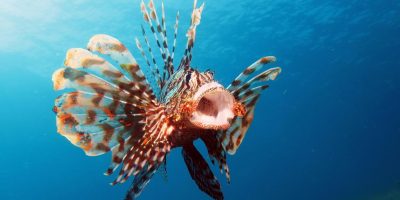

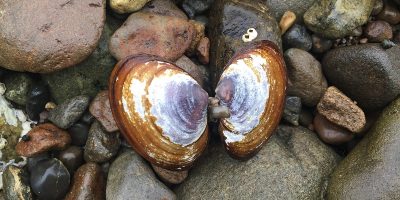
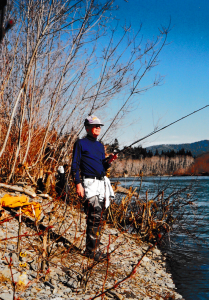
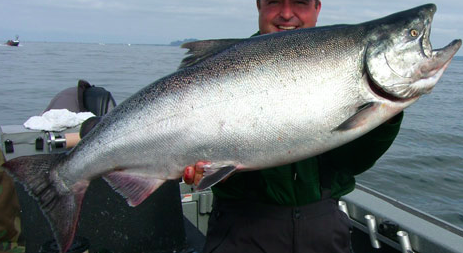

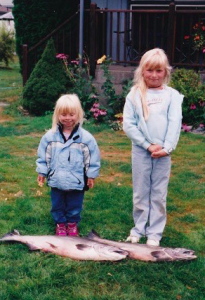
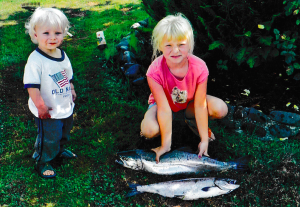



Rebecca Pringle
I enjoyed this post! So happy that you were brought up this way. Love the pictures!
John boyle
I only hope they can sustain some of the salmon runs fishing Willamette river Portland or
Robert Dashiell
Experienced similar historical chinook fishing, but have a difficulty linking the obvious major decline to significant habitat loss. Most major salmon producing rivers (snow, glacier fed) are not that much changed except for the Puget Sound lowland and mouth outflow reaches that have had some population impacts. Add the fact Washington State has now been doing salmon habitat restoration for some 20 years.
Until sufficient science studies convince me otherwise, I’m in the overfishing/lack of proper fish management camp.
Mike LaChapelle
I’ve been involved in salmon fishing my entire life. From sportfishing Puget sound in the 60’s, ocean charter fishing from Westport,trollers off wa, org, cal. 1 thing i never see addressed in these debates is the fact since 1974, a 7″ GILL NET MESH will take every big fish out of the gene pool. Only spawners left are the ones that get through
Scott
Seals! Please acknowledge the increase in the seal population that’s discovered the stacked up salmon due to damns. Please discuss the potential of correcting this issue immediately by managing the seal population.
Chris Carroll
I have been offshore commercial salmon trolling in Alaska since 1980. If you caught twenty kings in a day back then you were a ‘highliner’. Pound averages for a load were 20-22 lbs. Hatchery produced kings were few.
20 years later the kings in Alaska averaged around 15-16 lbs. Since about 2010 they’ve averaged between 10-12 lbs., but catch rates could average 50 kings a day. Lots of runty, hatchery produced kings.
The head biologist for Ak Fish & Game suggested at hearings in Sitka that size reduction may be due to chinook returning to spawn up to a year earlier than normal. No one knows why this is occurring.
Hatcheries are prolific now. For the last few seasons now the seabirds are almost completely absent. The whales have left too. I think the warm water ‘blob’ off shore the Gulf of Alaska plays a role too.
All of Alaska’s wild, free flowing rivers are experiencing the lowest returns on record.